Asian Stone Catfish – Quick Care Stats & Complete Guide
Small, shy, and perfectly camouflaged — the Asian Stone Catfish (Hara jerdoni) is a fascinating nano fish that brings a unique charm to any peaceful freshwater aquarium. Often compared to a living piece of driftwood, this catfish is ideal for aquarists who love observing natural behavior and subtle beauty. Though peaceful and low-maintenance, they do best in a quiet, well-oxygenated tank with plenty of hiding spots and soft substrate.
- Quick Care Stats for Hara jerdoni
- Physical Characteristics
- Habitat and Behavior
- Tank Requirements
- Diet & Feeding
- Tank Setup Tips
- Interaction with Other Tankmates
- Breeding and Reproduction
- Health Considerations
Quick Care Stats for Hara jerdoni
- Scientific Name: Hara jerdoni
- Common Name: Asian Stone Catfish, Dwarf Anchor Catfish
- Origin: South Asia: India (Ganges and Brahmaputra river basins), Bangladesh
- Max Length: 1.2–1.5 inches (3–3.8 cm)
- Minimum Tank: 10 gallons (38 liters), 20-gallon long recommended for stability and group dynamics
- Stocking: 4–6 fish per 10 gallons, ideally with small, peaceful tankmates (e.g., tetras, rasboras, dwarf loaches)
- Temperament: Peaceful, shy, and nocturnal; prefers small groups for social behavior
- Feeding: Nocturnal omnivore; accepts high-quality sinking pellets, frozen/live foods (e.g., bloodworms, brine shrimp), algae wafers, and occasional blanched vegetables
- Breeding: Challenging; requires a dedicated tank with dim lighting, hiding spots, and pristine water conditions; females lay adhesive eggs guarded by males
- Habitat: Slow-moving rivers, creeks, and streams with dense vegetation and leaf litter; prefers low to moderate current
- Tank Setup: Fine sand or smooth gravel substrate, densely planted with Cryptocoryne, Java moss, or Anubias, dim lighting (LED with dimming or floating plants), and multiple hiding spots (caves, driftwood, rocks)
- Active Tank Levels: Bottom-dweller; often clings to smooth surfaces or forages along the substrate
- Temperature: 64°F–75°F (18°C–24°C), ideal range 68°F–72°F (20°C–22°C) for long-term health
- pH: 6.5–7.5; slightly acidic to neutral water preferred
- Water Hardness: 2–12 dGH; soft to moderately hard water
- Lifespan: 5–7 years with proper care
Physical Characteristics
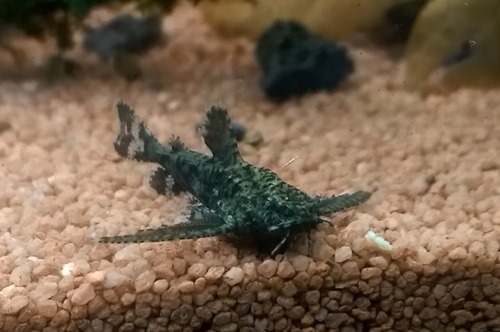
The Asian Stone Mini Catfish (Hara jerdoni) is a small, visually striking fish with distinctive features that make it a standout in nano aquariums:
Size: Fully grown, Hara jerdoni reaches approximately 1.2–1.5 inches (3–3.8 cm) in length, though some wild specimens may grow slightly larger, up to 1.6 inches (4 cm). Its compact size makes it ideal for small tanks, fitting seamlessly into nano setups as small as 8–10 gallons.
Body Shape: The fish has a slender, elongated body with a flattened ventral side and a depressed (flattened) head, enhancing its ability to navigate along the substrate. Its small, sub-terminal mouth is equipped with four pairs of barbels, which aid in foraging by detecting food in low-visibility environments.
Coloration and Pattern: The body ranges from light beige to pale brown or mottled gray, adorned with darker speckles or blotches that resemble riverbed stones, providing excellent camouflage against natural substrates. This stone-like appearance, combined with its ability to change color slightly from light to dark (including its eyes), helps it blend into its surroundings to evade predators.
Fins: Its most distinctive feature is its ventral and pectoral fins, which resemble tiny anchors, earning the nickname “Anchor Catfish.” The pectoral fins have elongated, serrated spines that the fish uses to lodge itself into crevices or stabilize movement along the substrate in moderate currents. The dorsal fin is sharp and serrated, serving as a defense mechanism against predators, while the caudal fin is slightly forked with a longer upper lobe.
Unique Adaptations: Hara jerdoni can produce quiet clicking or grunting sounds using its swim bladder, particularly during courtship or territorial disputes. These sounds, though subtle, are a form of communication and are more noticeable in quiet aquarium settings. The fish’s small eyes and cryptic coloration further enhance its ability to remain inconspicuous in its environment.
Sexual Dimorphism: Females are slightly more robust and fuller-bodied, especially when gravid, while males have longer pectoral fins and barbels, which are more pronounced during breeding displays. These differences are subtle but can be observed in mature groups.
These physical traits, particularly the anchor-like fins and camouflaged body, make Hara jerdoni a visually intriguing and functional addition to aquariums, blending seamlessly into naturalistic setups.
Habitat and Behavior
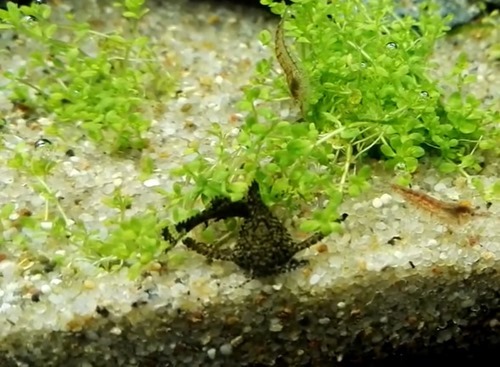
The Asian Stone Mini Catfish is native to the freshwater streams, rivers, and lakes of Southern Asia, including India, Bangladesh, Myanmar, and possibly Sri Lanka, where it inhabits diverse aquatic environments. Its behavior and habitat preferences inform its care in captivity, ensuring a thriving aquarium population.
Natural Habitat: Hara jerdoni is found in slow-moving to moderately fast-flowing streams, rivers, large lakes, and reservoirs, often in shallow waters less than 2 meters deep, though it may occur at depths up to 10 meters. Preferred habitats feature soft substrates (e.g., mud, sand, or fine gravel), dense aquatic vegetation (e.g., Vallisneria or submerged grasses), and rocky crevices or leaf litter, which provide cover and foraging opportunities. The fish thrives in well-oxygenated waters with moderate flow, often hiding among roots, bamboo, or rocks during the day to avoid predators.
Behavior in the Wild: Primarily nocturnal, Hara jerdoni is a shy, peaceful micropredator that forages at night for small invertebrates, crustaceans, and algae. Its cryptic coloration and anchor-like fins allow it to blend into the substrate or lodge itself in crevices, evading predators while hunting. The fish is gregarious, preferring to live in small groups or colonies, which enhances its sense of security and encourages natural behaviors.
Aquarium Behavior: In captivity, Hara jerdoni retains its nocturnal and shy demeanor, often hiding during the day among plants, driftwood, or rock caves. It becomes more active and visible at night or in dim lighting, especially during feeding. When kept in groups of 6 or more, these fish are more confident, occasionally venturing out during daylight if they feel secure. Their peaceful nature makes them excellent for community tanks with other small, non-aggressive species, such as Neon Tetras, Dario dario, or Red Cherry shrimp. However, they may be outcompeted for food by boisterous or fast-swimming tank mates, so careful selection is essential.
Environmental Needs: To mimic their natural habitat, aquariums should feature a fine sand or smooth gravel substrate to protect their delicate barbels and ventral fins. Dense planting (e.g., Java fern, Anubias, or Vallisneria nana) and hiding spots like caves, driftwood, or Indian almond leaves create a secure environment. Dim to moderate lighting (6500K–8000K) and gentle water flow from a sponge or hang-on-back filter (e.g., AquaClear or Seachem Tidal) replicate their preferred conditions. Maintain cool, well-oxygenated water (64–79°F or 18–26°C, pH 6.0–7.5, hardness 8–15 dGH) with regular 10–20% water changes to ensure optimal health.
Unique Traits: The fish’s ability to change color slightly to blend with its surroundings enhances its camouflage in both wild and aquarium settings. Its nocturnal foraging and subtle clicking sounds during social interactions add intrigue for observant aquarists. While not active swimmers, they actively explore the substrate, often nuzzling into leaf litter or plants in search of food, making them a fascinating addition to planted tanks.
Tank Requirements
Hara jerdoni thrives in a densely planted aquarium that mimics its natural habitat in slow-moving waters of South Asia, particularly India and Bangladesh. The tank should include ample hiding spots such as caves, driftwood, rocks, and leaf litter to provide security for this shy, nocturnal species. A smooth substrate like fine sand or small, rounded gravel is essential to protect their delicate ventral fins, as coarse or sharp substrates can cause injury. A tank size of at least 10 gallons (38 liters) is recommended for a small group, though larger tanks (20 gallons or more) are ideal for stable water conditions and group dynamics.
Water Parameters:
- Temperature: 64°F–75°F (18°C–24°C), with an optimal range of 68°F–72°F (20°C–22°C) to mimic their natural cool-water environment.
- pH: 6.5–7.5, with a preference for slightly acidic to neutral water.
- Hardness: Soft to moderately hard water (2–12 dGH).
- Water Flow: Low to moderate, as strong currents can stress this species.
- Filtration: Gentle filtration, such as a sponge filter or low-flow canister filter, is ideal to maintain clean water without disturbing the fish.
Regular water changes (10–20% weekly) are crucial to maintain stable water parameters, as Hara jerdoni is sensitive to fluctuations in water quality, particularly ammonia, nitrite, and nitrate spikes. Ensure the tank is well-oxygenated, as these fish prefer clean, oxygen-rich water. Dim lighting or floating plants like Anubias or Java fern can reduce stress and replicate their natural, shaded habitats.
Diet & Feeding
As omnivores, Hara jerdoni thrives on a varied diet that caters to its bottom-dwelling, nocturnal habits. Their small size (1.2–1.5 inches) and shy nature require foods that sink to the tank bottom and are accessible during their active hours at night. A balanced diet supports their health, coloration, and longevity (up to 5–7 years). Below are detailed feeding recommendations:
Core Diet: Offer high-quality sinking pellets or granules specifically formulated for bottom-dwellers, such as those designed for catfish or loaches (e.g., Hikari Sinking Wafers, Fluval Bug Bites Bottom Feeder Formula). These provide essential nutrients like proteins, vitamins, and minerals tailored to their omnivorous needs. Choose small-sized pellets (1–2 mm) to suit their tiny mouths.
Live and Frozen Foods: Supplement with frozen or live foods to mimic their natural diet and encourage foraging behavior. Suitable options include:
- Bloodworms (frozen or live, rich in protein)
- Brine shrimp (high in nutrients, excellent for growth)
- Daphnia (small and easily digestible)
- Tubifex worms (high-energy, but feed sparingly due to potential for carrying pathogens)
Ensure frozen foods are thawed and rinsed in dechlorinated water to remove preservatives before feeding. Live foods should come from reputable sources to avoid introducing parasites or bacteria.
Vegetable and Algae-Based Foods: Hara jerdoni occasionally grazes on algae and biofilm in the wild, so include algae wafers (e.g., Hikari Algae Wafers) and blanched vegetables like zucchini, cucumber, or spinach to provide fiber and micronutrients. To prepare vegetables, blanch them briefly (1–2 minutes in boiling water), cool in cold water, and weigh them down with a clip or stone to ensure they sink to the bottom. Remove uneaten vegetables within 12 hours to prevent decomposition.
Feeding Schedule and Technique: Feed small portions once or twice daily, preferably at night when Hara jerdoni is most active, to ensure they have access to food before faster tankmates consume it. Use a feeding ring or target-feed near their hiding spots (e.g., near caves or plants) to ensure food reaches the tank bottom. A red-light flashlight can help observe nighttime feeding without startling the fish. Avoid daytime feeding, as they are less likely to compete with diurnal tankmates like tetras or rasboras.
Preventing Overfeeding: Overfeeding can degrade water quality, leading to ammonia or nitrite spikes that stress Hara jerdoni. Offer only what the fish can consume in 2–3 minutes, and remove uneaten food with a siphon or turkey baster within 30 minutes. Monitor water parameters (ammonia: 0 ppm, nitrite: 0 ppm, nitrate: <20 ppm) to ensure a healthy environment, as Hara jerdoni is sensitive to poor water quality.
Nutritional Considerations: Rotate food types (e.g., pellets one day, frozen foods the next) to provide dietary variety and prevent nutritional deficiencies. Occasionally include foods enriched with spirulina or vitamins to enhance coloration and immune health. Avoid floating foods, as Hara jerdoni rarely ventures to the surface to feed.
Tankmate Competition: In community tanks, ensure Hara jerdoni gets enough food by observing feeding sessions. If faster tankmates (e.g., tetras) consume sinking foods before they reach the bottom, consider using a feeding tube or dispersing food in multiple areas near hiding spots. Compatible bottom-dwellers like Corydoras pygmaeus or dwarf shrimp can coexist without significant competition, but avoid aggressive feeders like large barbs.
Special Notes: If Hara jerdoni shows signs of reduced appetite or lethargy, check water parameters and tank conditions first, as these are common causes of feeding issues. Fast the fish for 1–2 days if bloating is observed, then resume feeding with small, easily digestible foods like daphnia. For breeding setups, increase protein-rich foods (e.g., live brine shrimp) to condition adults for spawning.
Tank Setup Tips
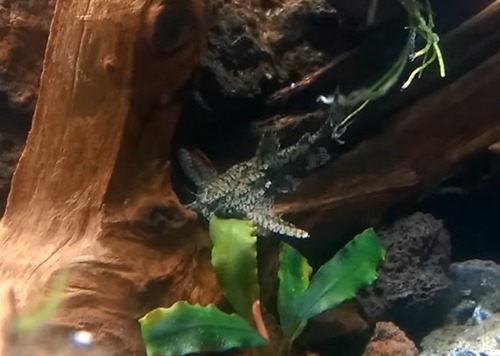
Creating a tank environment that closely mimics the natural habitat of Hara jerdoni is essential for their health and well-being. These small, nocturnal catfish originate from slow-moving, shaded waters in South Asia, so the aquarium should prioritize a naturalistic setup with ample cover, gentle water flow, and subdued lighting. Below are detailed recommendations to optimize their tank:
Use live plants like Cryptocoryne, Java moss, or Anubias to create a natural environment.
Incorporate hardy, low-maintenance live plants to replicate the dense vegetation of their natural habitat. Cryptocoryne species (e.g., Cryptocoryne wendtii or Cryptocoryne parva) thrive in low to moderate light and provide excellent cover for these shy fish. Java moss can be attached to driftwood or rocks, creating soft, textured hiding spots and fostering biofilm growth, which Hara jerdoni may graze on.
Anubias species (e.g., Anubias nana or Anubias barteri) are ideal for anchoring to hardscape, as their broad leaves offer shade and resting surfaces. These plants also help maintain water quality by absorbing nitrates. For added naturalism, consider adding leaf litter (e.g., dried Indian almond leaves or oak leaves), which releases beneficial tannins and mimics the fish’s natural environment. Ensure plants are rooted securely or attached to prevent disturbance by the catfish’s bottom-dwelling behavior.
Include flat stones or slate to provide resting surfaces, as these fish often cling to smooth surfaces.
Hara jerdoni is known for its unique ability to cling to surfaces using its modified pectoral and ventral fins. Provide smooth, flat stones, slate tiles, or polished river rocks as resting spots, as these surfaces allow the fish to anchor comfortably while foraging or resting. Arrange these materials to create small caves, overhangs, or crevices where the fish can hide during the day.
Driftwood with smooth surfaces or ceramic decorations (e.g., small clay pots or tubes) can also serve as anchor points. Avoid sharp-edged rocks that could damage their delicate fins. For aesthetic and functional balance, combine these hardscape elements with plants to create a layered, naturalistic environment. Ensure all decorations are securely placed to prevent toppling, as Hara jerdoni may explore or nudge them during nocturnal activity.
Avoid bright overhead lighting; use LED lights with dimming capabilities or floating plants to diffuse light.
As a nocturnal species, Hara jerdoni is sensitive to bright light, which can cause stress and reduce activity. Use adjustable LED lights with dimming capabilities to maintain low to moderate lighting levels (e.g., 1–2 watts per gallon for planted tanks). A light spectrum in the 5000–7000K range promotes plant growth while keeping the environment comfortable for the fish. Alternatively, incorporate floating plants like Salvinia, Frogbit, or Water lettuce to diffuse light and create shaded areas, mimicking the dappled lighting of their natural habitat.
A programmable timer set to a 10–12-hour light cycle helps regulate their day/night rhythm. If using stronger lights for plant growth, strategically place tall plants or hardscape to create shadowy retreats. Avoid sudden light changes, as these can startle the fish; gradual transitions (e.g., dimming over 30 minutes) are ideal.
Substrate Selection: Choose a smooth substrate like fine sand (1–2 mm grain size) or small, rounded gravel to protect the fish’s ventral fins. A thin layer (0.5–1 cm) over a nutrient-rich base (e.g., aquasoil) supports plant growth while ensuring safety. Bare-bottom tanks are an option for breeding setups to simplify cleaning and egg monitoring.
Hiding Spots: Beyond stones and plants, include small caves, PVC pipes (1–2 inches in diameter), or coconut shells cut in half to provide secure retreats. These are especially important for breeding and reducing stress in community tanks.
Water Flow and Filtration: Use a gentle filtration system, such as a sponge filter or a canister filter with an adjustable flow rate, to maintain clean water without creating strong currents. Position the filter outflow to avoid disturbing the substrate or stressing the fish.
Tank Size and Layout: A minimum tank size of 10 gallons (38 liters) suits a small group (4–6 individuals), but a 20-gallon (75-liter) long tank is preferable for better water stability and space for schooling behavior. Arrange decorations to create open bottom areas for foraging and sheltered zones for resting.
Maintenance: Perform weekly water changes of 10–20% to maintain stable parameters, using dechlorinated water matched to the tank’s temperature and pH. Vacuum the substrate lightly to remove debris without disrupting the fish or plants.
Pro Tip: To enhance the naturalistic feel and promote beneficial microbial growth, add a thin layer of leaf litter or botanicals after rinsing them thoroughly to remove debris. This not only benefits Hara jerdoni but also supports tankmates like shrimp or small bottom-dwellers.
Interaction with Other Tankmates
Hara jerdoni is a peaceful, non-aggressive species that coexists well with small, calm tankmates in a community aquarium. Their small size (1–1.5 inches or 2.5–3.8 cm) and nocturnal, bottom-dwelling habits make them ideal for tanks with other small, non-competitive species. Compatible tankmates include:
- Small Schooling Fish: Tetras (e.g., neon tetras, ember tetras), rasboras (e.g., harlequin rasboras, chili rasboras), and danios.
- Bottom-Dwellers: Corydoras catfish (e.g., Corydoras pygmaeus), dwarf loaches (e.g., Kuhli loach), and small shrimp (e.g., cherry shrimp or Amano shrimp).
- Other Peaceful Species: Otocinclus catfish, small gouramis (e.g., honey gourami), and peaceful invertebrates like nerite snails.
Tankmates to Avoid:
- Aggressive or territorial fish (e.g., cichlids, barbs, or large gouramis) that may harass or intimidate Hara jerdoni.
- Fast, competitive feeders (e.g., large tetras or goldfish) that may outcompete them for food.
- Large predatory fish (e.g., oscars or arowanas) that may view Hara jerdoni as prey.
- Species requiring significantly different water parameters (e.g., African cichlids preferring high pH and hardness).
To ensure Hara jerdoni thrives, feed sinking foods at night to minimize competition and monitor interactions during the initial introduction of tankmates. Their small size and retiring nature make them vulnerable to bullying, so provide ample hiding spots to reduce stress.
Breeding and Reproduction
Breeding Hara jerdoni in captivity is challenging due to their secretive behavior and specific environmental needs. Successful breeding typically requires a dedicated breeding tank (10–15 gallons) with carefully controlled conditions. The tank should have subdued lighting, dense vegetation, and multiple hiding spots such as small caves, PVC pipes, or coconut shells to encourage spawning. A substrate of fine sand or bare-bottom tanks is often used to monitor egg placement and maintain cleanliness.
Breeding Conditions:
- Temperature: Slightly warmer, around 70°F–74°F (21°C–23°C).
- pH: 6.5–7.0 for optimal egg viability.
- Water Quality: Pristine, with frequent small water changes to maintain stability.
- Lighting: Low, with a 12-hour light/dark cycle to mimic natural conditions.
Females lay small clutches of adhesive eggs (typically 20–50) in secluded areas, such as under rocks, inside caves, or on plant leaves. Males are known to guard the eggs, fanning them to ensure oxygenation and prevent fungal growth. Spawning is more likely in a tank with a small group (4–6 individuals) to allow natural pair formation. To trigger spawning, simulate seasonal changes by slightly lowering the water temperature for a few weeks, then gradually raising it while increasing feeding with high-protein foods like live brine shrimp or bloodworms.
Fry Care:
- Eggs hatch in 3–5 days, depending on water temperature.
- Fry are tiny and require infusoria, liquid fry food, or powdered microalgae for the first 1–2 weeks. As they grow, transition to crushed flake food, microworms, or baby brine shrimp.
- Maintain excellent water quality, as fry are highly sensitive to pollutants.
- Separate fry from adults to prevent predation, using a breeding trap or a separate rearing tank.
With proper care, Hara jerdoni can live 5–7 years in captivity, though lifespans may vary based on diet, water quality, and stress levels.
Health Considerations
Hara jerdoni is a hardy species when provided with stable water conditions and a suitable environment, but their small size and shy nature make them susceptible to stress and certain health issues. Monitoring their behavior and physical condition is crucial to detect and address problems early. Below are detailed health considerations and preventive measures to keep these catfish thriving:
Watch for signs of stress or illness, such as lethargy, loss of appetite, or fin damage, which may indicate poor water quality or aggression from tankmates. Hara jerdoni exhibits specific behaviors and physical symptoms when stressed or unwell. Common signs include:
- Lethargy: Reduced activity, prolonged hiding (even at night when they are typically active), or resting in open areas instead of clinging to surfaces.
- Loss of Appetite: Refusal to eat sinking pellets, frozen foods, or algae wafers, which may signal stress, poor water quality, or internal issues.
- Fin Damage: Torn, frayed, or clamped fins, which could result from physical injury (e.g., sharp substrate), aggression from tankmates, or bacterial/fungal infections.
- Abnormal Coloration: Fading of their typical dark, mottled pattern or a pale, washed-out appearance, often linked to stress or poor water conditions.
- Erratic Behavior: Rapid swimming, darting to the surface, or rubbing against objects (flashing), which may indicate parasites like ich (Ichthyophthirius multifiliis) or skin irritation.
Potential Causes and Solutions:
- Poor Water Quality: Test water parameters regularly (ammonia, nitrite, nitrate, pH, and temperature) using a reliable liquid test kit. Ammonia and nitrite should always be 0 ppm, with nitrates below 20 ppm. If water quality is poor, perform a 10–20% water change with dechlorinated water matched to the tank’s temperature and pH, and check filter function.
- Aggression from Tankmates: Observe interactions to identify if larger or more aggressive species (e.g., barbs, cichlids) are harassing Hara jerdoni. If aggression is detected, consider rehoming incompatible tankmates or adding more hiding spots (e.g., caves, dense plants) to reduce stress.
- Inadequate Diet: Ensure a varied diet with sinking foods (e.g., pellets, bloodworms) to meet nutritional needs. Feed at night to align with their nocturnal habits, and remove uneaten food to prevent water fouling.
- Environmental Stress: Verify that lighting is dim, water flow is gentle, and hiding spots are abundant. Sudden changes in light or water parameters can stress Hara jerdoni, so implement gradual adjustments (e.g., slow acclimation for water changes).
Common Health Issues:
- Ich (White Spot Disease): Small white spots on the body or fins, often caused by stress or poor water quality. Treat with aquarium-safe ich medications (e.g., malachite green or copper-based treatments) and raise the temperature slightly (up to 75°F/24°C) to speed up the parasite’s life cycle, but avoid exceeding their preferred range.
- Bacterial Infections: Reddened fins, open sores, or fin rot may indicate bacterial issues. Improve water quality and use a broad-spectrum antibiotic (e.g., erythromycin or tetracycline) in a quarantine tank, following product instructions.
- Fungal Infections: Cotton-like growths on the body or fins. Treat with antifungal medications (e.g., methylene blue) and maintain pristine water conditions.
- Skin Parasites: Flashing or scratching may indicate external parasites like flukes. Use a parasite treatment (e.g., praziquantel) in a quarantine tank to avoid harming beneficial tank bacteria or sensitive tankmates like shrimp.

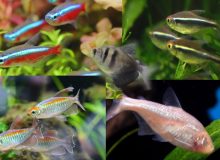
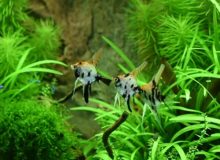
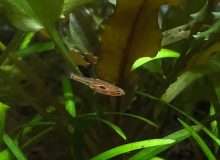
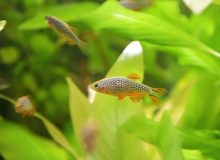
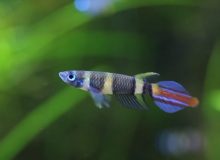
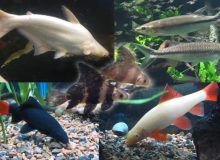
can i have mine in a tank with a beta that’s around 74 degrees to 76 at all times?
Yes, you can.
Do you have a breeding group of Rili Shrimp housed in with the Stone Catfish? Do the Catfish eat your Rili Shrimp fry?
If no I might try some with my guppy/shrimp tank…
Thanks!
Hi Michael,
It is possible for these fish to eat baby shrimp; however, it will not affect too much the population of your shrimp. It is very hard for them to catch a baby shrimp as they can’t see the shrimp for chasing.
Hi Lucas, I have 5 of these with 4 otos and a few RCS. They are very active early evening and I have seen them investigating the floating plants and snuffling around in the cholla wood/moss “trees”
They love slurping bloodworms. I have a suspicion that they also hunt detritus worms and possibly tiny baby snails. I agree that they have very poor eyesight.
My question is have you ever know yours to shed their skin?
One of mine looked like it was doing that last night so I did an emergency water change . The others are all fine and the one with the shedding problem still seems happy and normal in it’s behaviour.
There is so little info on them so any advice welcome 🤗
Ammonia 0
Nitrite 0
Nitrate 10 last night now 5
Ph 7.5
KH 7
Gh7
Hi Helen,
Shedding skin is a serious problem with these catfish, this could be a sign of death. Normally, this problem is caused by a drop in the oxygen level or increased nitrates. Your water is ok, so I think the problem may be the oxygen level. Hope this help.
Thank you for the reply Lucas.
I have increased surface movement to encourage more oxygen exchange and all Hara are fine. I am wondering if maybe it had just changed colour which made it look like it had shed? I had the blue light on at the time…
Anyway, they are all eating and wiggling as usual but I will be keeping a very close eye on them.
Could I keep four of these guys and a betta in a five gallon? I would do weekly gravel cleanings and a 50% water change every week. And what and when should you feed them? Thanks
Yes, there is no problem with this. Feed them twice a day with foods in the article. They also consume uneaten foods from the Betta.
Is it normal for the catfish to hang out at the top of the tank with floating plants even if the water is well oxygenated
You should check ammonia, nitrite, pH,… and ensure everything is ok.